









News and Highlights
2025-06-18:
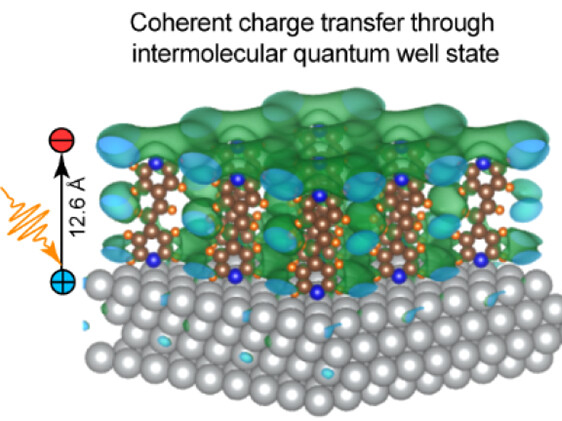
New article published on JACS :
Ultrafast Coherent Electron Transfer through Intermolecular Quantum Well States
Congratulations to Xintong Li! Expand
Ultrafast Coherent Electron Transfer through Intermolecular Quantum Well States
Congratulations to Xintong Li! Expand
Molecular materials offer a boundless design palette for light absorption and charge transport in both natural photosynthesis and engineered photovoltaics. They function in combination as chromophores, donors, conductors, and acceptors, enabling the excitation and charge carrier transport through space and wire-like intramolecular pathways. Although quantum coherence is believed to enhance photoexcitation and photoinduced charge transfer, fluctuating and inhomogeneous environments accelerate decoherence. Here, we assemble a nanoporous medium consisting of a templated bipyridyl ethylene (BPE) molecule array on a Ag(111) surface that functions as an exceptional intermolecular nonnuclear quantum well conductor of coherent electron waves spanning over 20 Å length. Time-periodic driving of the Ag/BPE interface by femtosecond pulses promotes electrons into a ladder of Floquet quasi-energy donor states, where intermolecular quantum well states act as a resonant doorway for coherent electron transport into BPE/vacuum image potential acceptor states. The bifurcation of electron passage between the Floquet donor ladder and the charge transfer acceptor channel is recorded by projecting the active electrons into the photoemission continuum in an interferometric time- and angle-resolved multiphoton photoemission experiment. We find that exceptional decoupling of electrons from the metal substrate by the molecule-dressed vacuum preserves the coherence on the ∼150 fs time scale. This offers a new paradigm for quantum state design where a molecule-dressed vacuum mediates coherent electron transport in nanoporous molecular architectures.
2025-04-29:
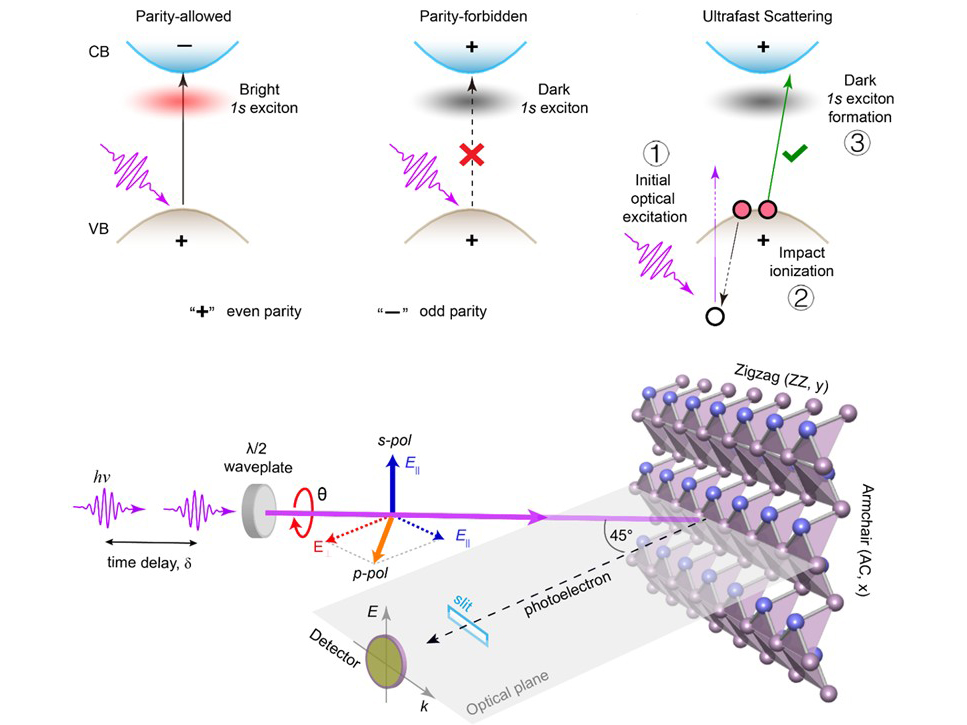
New article published on Nat. Commun. :
Ultrafast energizing the parity-forbidden dark exciton in black phosphorus
Congratulations to Guangzhen Shen! Expand
Ultrafast energizing the parity-forbidden dark exciton in black phosphorus
Congratulations to Guangzhen Shen! Expand
As conventional electronic materials approach their physical limits, the application of ultrafast optical fields to access transient states of matter captures imagination. The inversion symmetry governs the optical parity selection rule, differentiating between accessible and inaccessible states of matter. To circumvent parity-forbidden transitions, the common practice is to break the inversion symmetry by material design or external fields. Here we report how the application of femtosecond ultraviolet pulses can energize a parity-forbidden dark exciton state in black phosphorus while maintaining its intrinsic material symmetry. Unlike its conventional bandgap absorption in visible-to-infrared, femtosecond ultraviolet excitation turns on efficient Coulomb scattering, promoting carrier multiplication and electronic heating to ~3000 K, and consequently populating its parity-forbidden states. Interferometric time- and angle-resolved two-photon photoemission spectroscopy reveals dark exciton dynamics of black phosphorus on ~100 fs time scale and its anisotropic wavefunctions in energy-momentum space, illuminating its potential applications in optoelectronics and photochemistry under ultraviolet optical excitation.
2025-01-17:
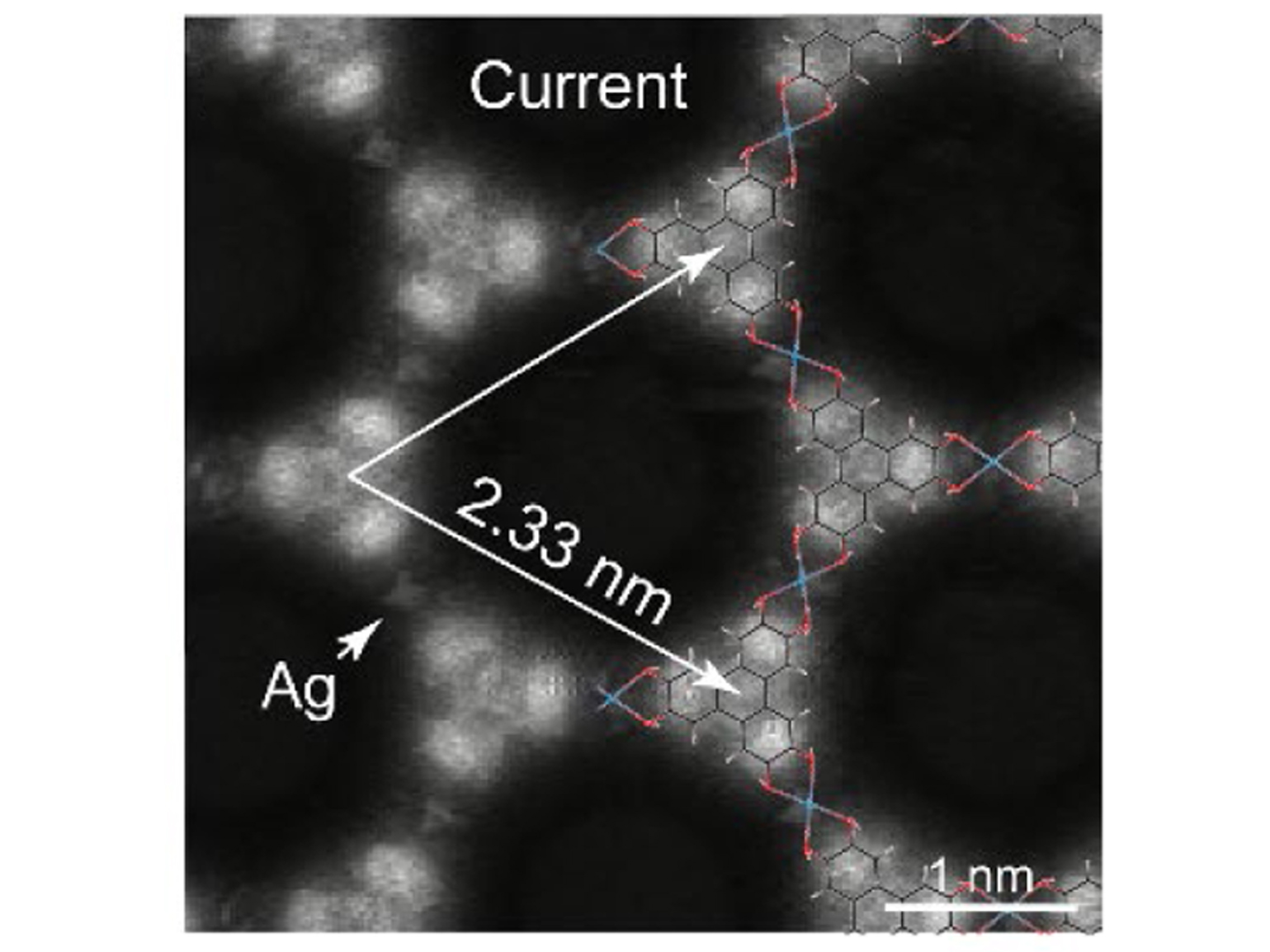
New article published on Carbon Trends :
Pyrolysis conversion of crown-ether-based covalent networks to kagome metal-organic frameworks on Au(111) and Ag(111)
Congratulations to Yifan Liang! Expand
Pyrolysis conversion of crown-ether-based covalent networks to kagome metal-organic frameworks on Au(111) and Ag(111)
Congratulations to Yifan Liang! Expand
On-surface chemistry provides an efficient approach to construction of diverse covalent architectures with atomic precision, ranging from one-dimensional chains and ribbons to two-dimensional covalent organic frameworks (COFs) and metal-organic frameworks (MOFs) on coinage metal substrates. This study explores a distinct on-surface pyrolysis approach to MOFs derived from a crown ether molecular precursor on Au(111) and Ag(111) surfaces. Utilizing scanning tunneling microscopy (STM) and non-contact atomic force microscopy (nc-AFM) combined with density functional theory (DFT) calculations, we elucidate the adsorption behavior and the characteristic macrocyclic configuration of the crown ether on Au(111). Subsequent surface-catalyzed Ullmann coupling reactions at an annealing temperature of 470 K lead to highly disordered COFs with the formation of four-membered and six-membered rings through dimerization and trimerization. For the Ag(111) surface, further annealing at 520 K initiates a unique dehydrogenative reaction within the macrocyclic rings, resulting in the loss of six hydrogen atoms. At an elevated temperature of 720 K, breaking of the second C−O bonds yields a long-range ordered triphenylene-based MOF structure. Electronic characterizations reveal the presence of both regular and diatomic kagome lattices, together with distinct quantum-dot states emerging in the pore regions. Additionally, we investigate the selective encapsulation of single guest picenes within the MOF structure, emphasizing the potential of triphenylene-based frameworks for advanced applications in sensing and molecular filtering. Our findings provide a comprehensive insight into the chemical reactivity of crown ethers on metal substrates and demonstrate a novel pathway to designing MOFs through an on-surface pyrolysis process.
2024-09-05:
Yiwei Hu & Jianbo Hao joined our research group, welcome!
2024-06-09:
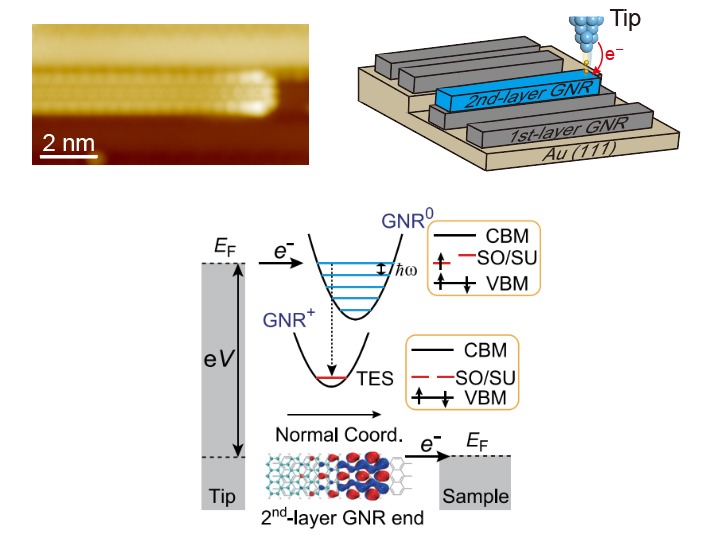
New article published on Phys. Rev. Lett. :
Topologically Localized Vibronic Excitations in Second-layer Graphene Nanoribbons
Congratulations to Zhengya Wang! Expand
Topologically Localized Vibronic Excitations in Second-layer Graphene Nanoribbons
Congratulations to Zhengya Wang! Expand
It is of fundamental importance to characterize the intrinsic properties, like the topological end states, in the on-surface synthesized graphene nanoribbons (GNRs), but the strong electronic interaction with the metal substrate usually smears out their characteristic features. Here, we report our approach to investigate the vibronic excitations of the topological end states in self-decoupled second-layer GNRs, which are grown using an on-surface squeezing-induced spillover strategy. The vibronic progressions show highly spatially localized distributions at the second-layer GNR ends, which can be ascribed to the decoupling-extended lifetime of charging through resonant electron tunneling at the topological end states. In combination with theoretical calculations, we assign the vibronic progressions to specific vibrational modes that mediate the vibronic excitations. The spatial distribution of each resolved excitation shows evident characteristics beyond the conventional Franck−Condon picture. Our work by direct growth of second-layer GNRs provides an effective way to explore the interplay between the intrinsic electronic, vibrational, and topological properties.
2024-04-06:
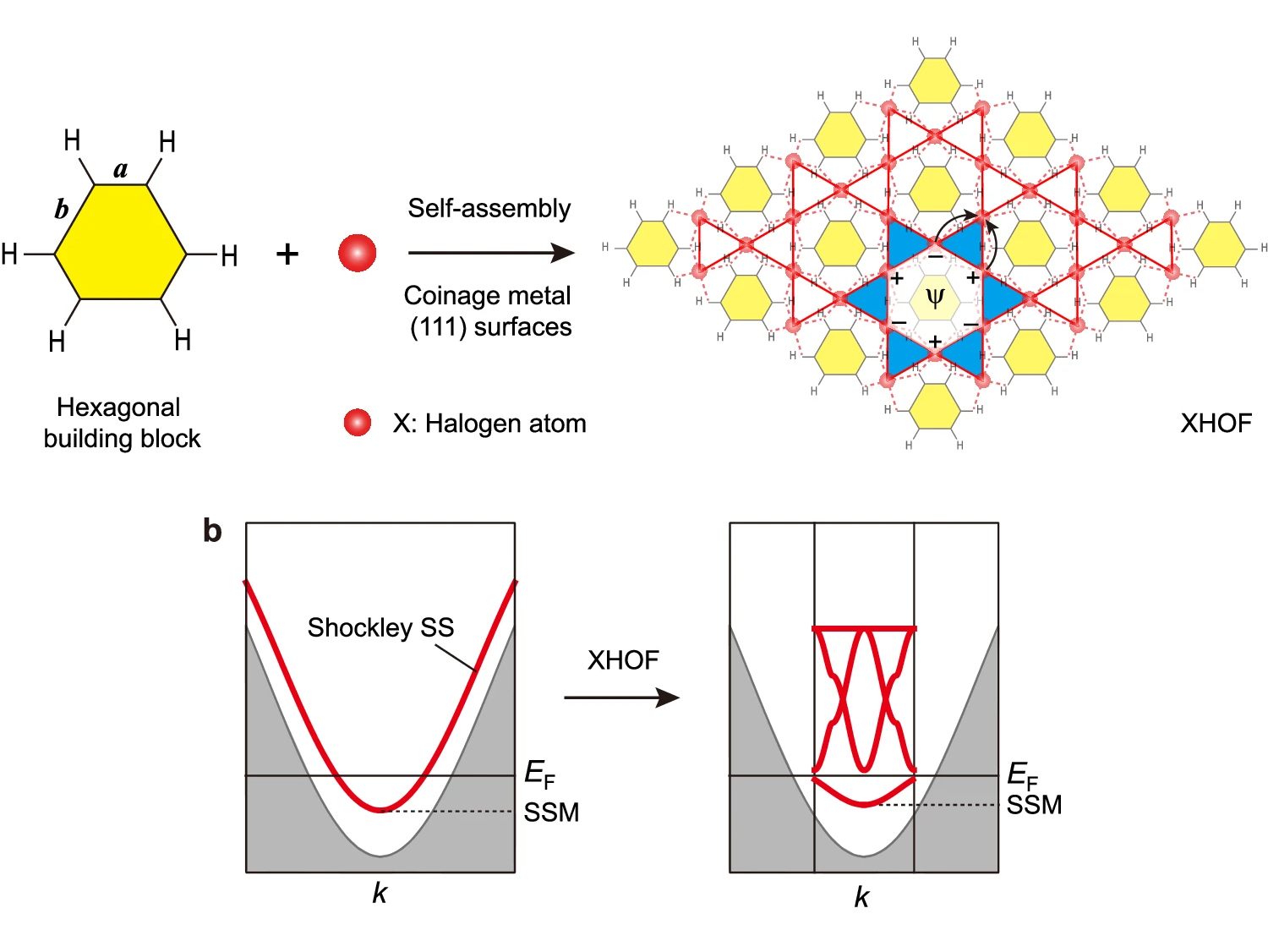
New article published on Nat. Commun. :
Artificial Kagome Lattices of Shockley Surface States Patterned by Halogen Hydrogen-bonded Organic Frameworks
Congratulations to Ruoting Yin & Xiang Zhu! Expand
Artificial Kagome Lattices of Shockley Surface States Patterned by Halogen Hydrogen-bonded Organic Frameworks
Congratulations to Ruoting Yin & Xiang Zhu! Expand
Artificial electronic kagome lattices may emerge from electronic potential landscapes using customized structures with exotic supersymmetries, benefiting from the confinement of Shockley surface-state electrons on coinage metals, which offers a flexible approach to realizing intriguing quantum phases of matter that are highly desired but scarce in available kagome materials. Here, we devise a general strategy to construct varieties of electronic kagome lattices by utilizing the on-surface synthesis of halogen hydrogen-bonded organic frameworks (XHOFs). As a proof of concept, we demonstrate three XHOFs on Ag(111) and Au(111) surfaces, which correspondingly deliver regular, breathing, and chiral breathing diatomic-kagome lattices with patterned potential landscapes, showing evident topological edge states at the interfaces. The combination of scanning tunnelling microscopy and noncontact atomic force microscopy, complemented by density functional theory and tight-binding calculations, directly substantiates our method as a reliable and effective way to achieve electronic kagome lattices for engineering quantum states.
2024-03-14:
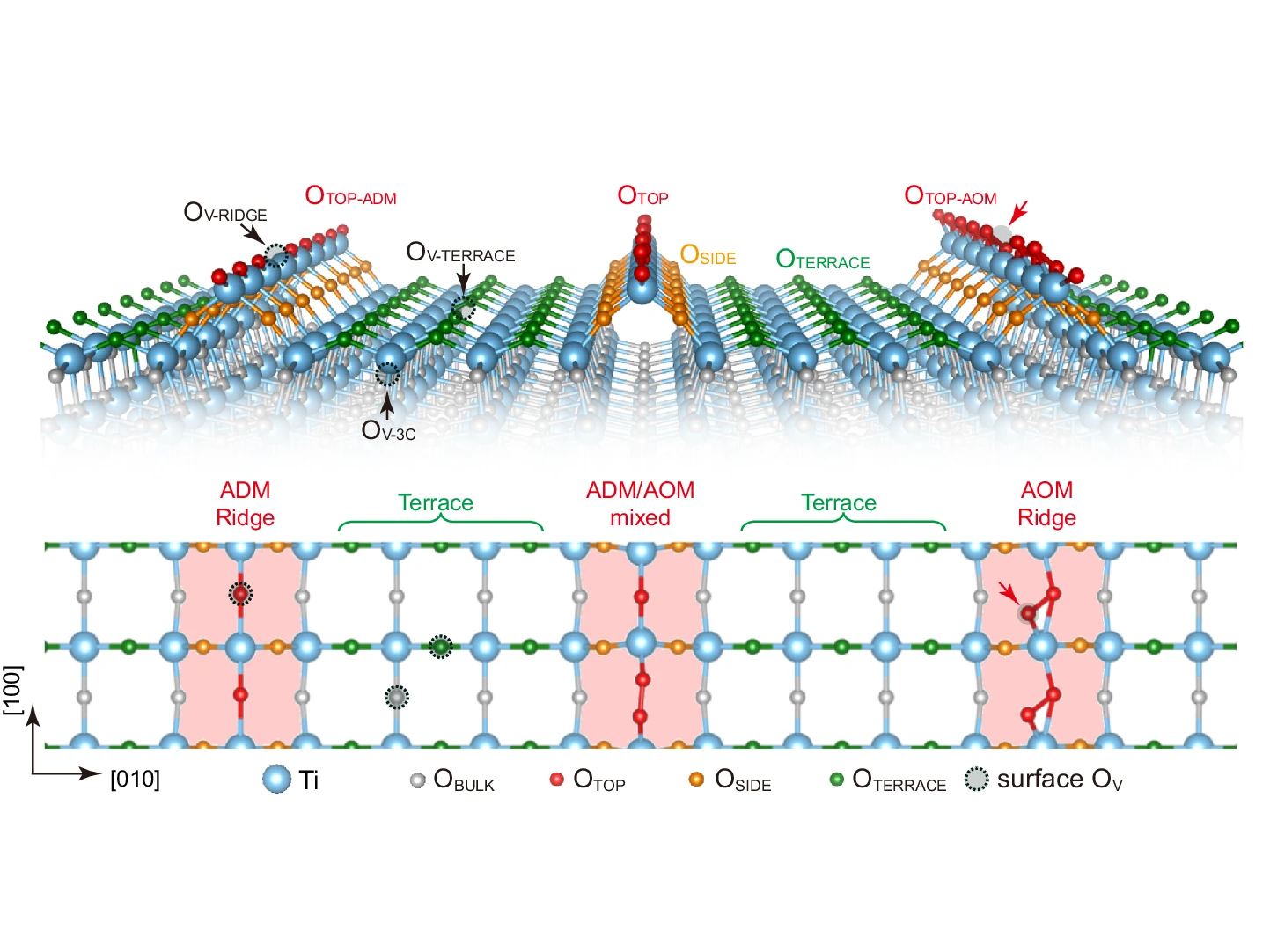
New article published on Nat. Commun. :
Unveiling Diverse Coordination-defined Electronic Structures of Reconstructed Anatase TiO2(001)-(1 × 4) Surface
Congratulations to Xiaochuan Ma! Expand
Unveiling Diverse Coordination-defined Electronic Structures of Reconstructed Anatase TiO2(001)-(1 × 4) Surface
Congratulations to Xiaochuan Ma! Expand
Transition metal oxides (TMOs) exhibit fascinating physicochemical properties, which originate from the diverse coordination structures between the transition metal and oxygen atoms. Accurate determination of such structure-property relationships of TMOs requires to correlate structural and electronic properties by capturing the global parameters with high resolution in energy, real, and momentum spaces, but it is still challenging. Herein, we report the determination of characteristic electronic structures from diverse coordination environments on the prototypical anatase-TiO2(001) with (1 × 4) reconstruction, using high-resolution angle-resolved photoemission spectroscopy and scanning tunneling microscopy/atomic force microscopy, in combination with density functional theory calculation. We unveil that the shifted positions of O 2s and 2p levels and the gap-state Ti 3p levels can sensitively characterize the O and Ti coordination environments in the (1 × 4) reconstructed surface, which show distinguishable features from those in bulk. Our findings provide a paradigm to interrogate the intricate reconstruction-relevant properties in many other TMO surfaces.
2023-09-05:
Jingzun Liao, Gongyi Cheng, Jianheng Ye, Linshan Yang, Huafeng Wen & Wenhui Leng joined our research group, welcome!
2023-09-04:
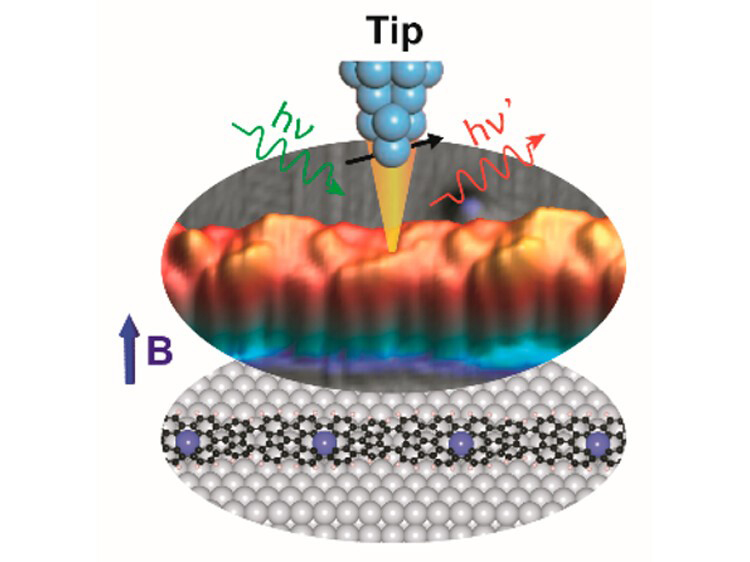
New article published on ACS Nano :
On-surface Synthesis of Graphene Nanoribbons with Atomically Precise Structural Heterogeneities and On-site Characterizations
Congratulations to Zhengya Wang & Ruoting Yin! Expand
On-surface Synthesis of Graphene Nanoribbons with Atomically Precise Structural Heterogeneities and On-site Characterizations
Congratulations to Zhengya Wang & Ruoting Yin! Expand
Graphene nanoribbons (GNRs) are strips of graphene, with widths of a few nanometers, that are promising candidates for future applications in nanodevices and quantum information processing due to their highly tunable structure-dependent electronic, spintronic, topological, and optical properties. Implantation of periodic structural heterogeneities, such as heteroatoms, nanopores, and non-hexagonal rings, has become a powerful manner for tailoring the designer properties of GNRs. The bottom-up synthesis approach, by combining on-surface chemical reactions based on rationally designed molecular precursors and in situ tip-based microscopic and spectroscopic techniques, promotes the construction of atomically precise GNRs with periodic structural modulations. However, there are still obstacles and challenges lying on the way toward the understanding of the intrinsic structure–property relations, such as the strong screening and Fermi level pinning effect of the normally used transition metal substrates and the lack of collective tip-based techniques that can cover multi-internal degrees of freedom of the GNRs. In this Perspective, we briefly review the recent progress in the on-surface synthesis of GNRs with diverse structural heterogeneities and highlight the structure–property relations as characterized by the noncontact atomic force microscopy and scanning tunneling microscopy/spectroscopy. We furthermore motivate to deliver the need for developing strategies to achieve quasi-freestanding GNRs and for exploiting multifunctional tip-based techniques to collectively probe the intrinsic properties.
2023-06-20:

New article published on J. Am. Chem. Soc. :
Revealing Intramolecular Isotope Effects with Chemical-bond Precision
Congratulations to Xiang Zhu & Jiayu Xu! Expand
Revealing Intramolecular Isotope Effects with Chemical-bond Precision
Congratulations to Xiang Zhu & Jiayu Xu! Expand
Isotope substitution of a molecule not only changes its vibrational frequencies but also changes its vibrational distributions in real-space. Quantitatively measuring the isotope effects inside a polyatomic molecule requires both energy and spatial resolutions at the single-bond level, which has been a long-lasting challenge in macroscopic techniques. By achieving ångström resolution in tip-enhanced Raman spectroscopy (TERS), we record the corresponding local vibrational modes of pentacene and its fully deuterated form, enabling us to identify and measure the isotope effect of each vibrational mode. The measured frequency ratio νH/νD varies from 1.02 to 1.33 in different vibrational modes, indicating different isotopic contributions of H/D atoms, which can be distinguished from TERS maps in real-space and well described by the potential energy distribution simulations. Our study demonstrates that TERS can serve as a non-destructive and highly sensitive methodology for isotope detection and recognition with chemical-bond precision.
2023-04-25:
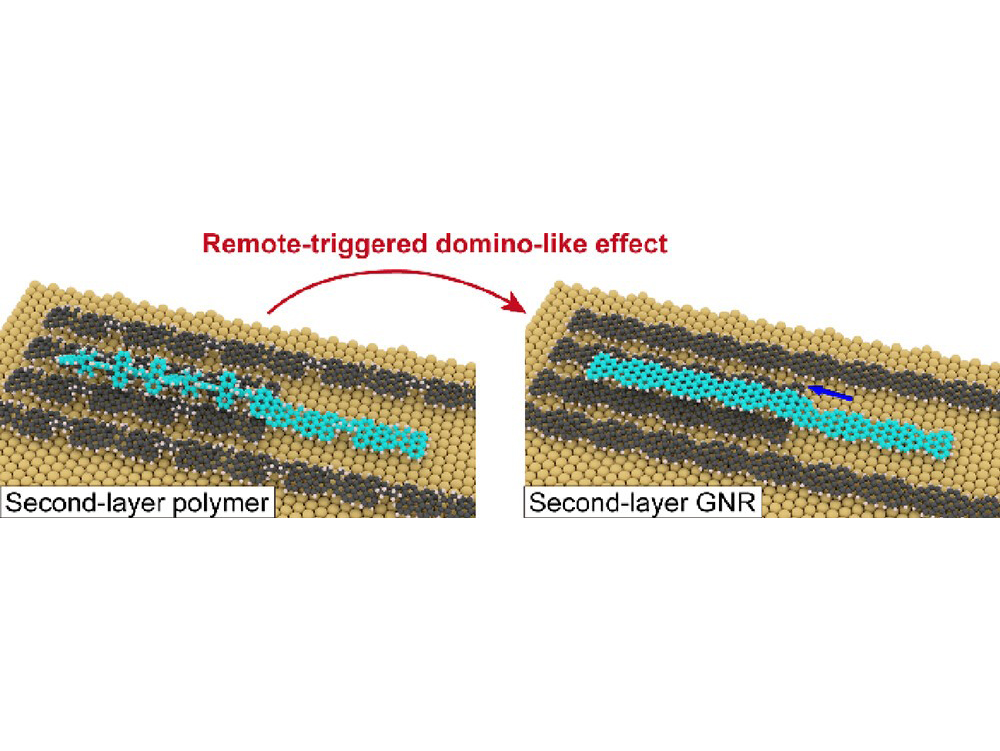
New article published on J. Am. Chem. Soc. :
Remote-triggered Domino-like Cyclodehydrogenation in Second-layer Topological Graphene Nanoribbons
Congratulations to Jufeng Wang & Ruoting Yin! Expand
Remote-triggered Domino-like Cyclodehydrogenation in Second-layer Topological Graphene Nanoribbons
Congratulations to Jufeng Wang & Ruoting Yin! Expand
Cyclodehydrogenation reactions in the on-surface synthesis of graphene nanoribbons (GNRs) usually involve a series of Csp2–Csp2 and/or Csp2–Csp3 couplings and just happen on uncovered metal or metal oxide surfaces. It is still a big challenge to extend the growth of second-layer GNRs in the absence of necessary catalytic sites. Here, we demonstrate the direct growth of topologically nontrivial GNRs via multistep Csp2–Csp2 and Csp2–Csp3 couplings in the second layer by annealing designed bowtie-shaped precursor molecules over one monolayer on the Au(111) surface. After annealing at 700 K, most of the polymerized chains that appear in the second layer covalently link to the first-layer GNRs that have partially undergone graphitization. Following annealing at 780 K, the second-layer GNRs are formed and linked to the first-layer GNRs. Benefiting from the minimized local steric hindrance of the precursors, we suggest that the second-layer GNRs undergo domino-like cyclodehydrogenation reactions that are remotely triggered at the link. We confirm the quasi-freestanding behaviors in the second-layer GNRs by measuring the quasiparticle energy gap of topological bands and the tunable Kondo resonance from topological end spins using scanning tunneling microscopy/spectroscopy combined with first-principles calculations. Our findings pave the avenue to diverse multilayer graphene nanostructures with designer quantum spins and topological states for quantum information science.
2023-04-04:
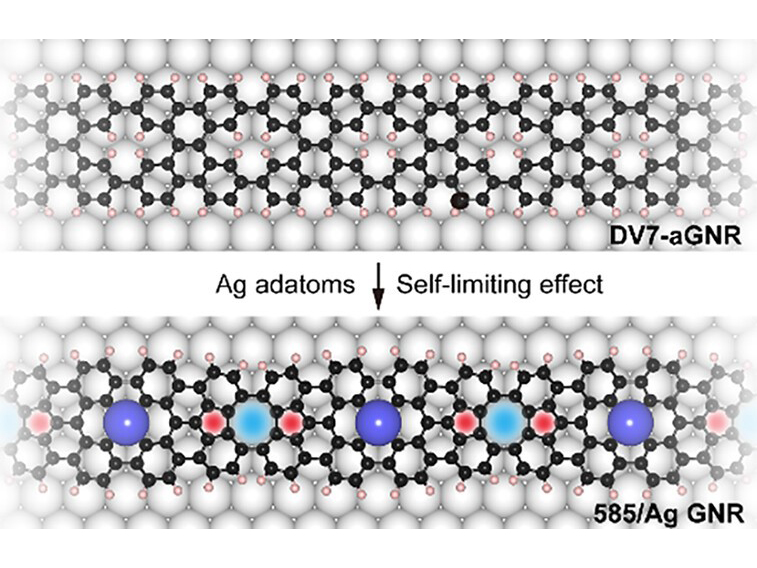
New article published on J. Am. Chem. Soc. :
Self-limited Embedding Alternating 585-Ringed Divacancies and Metal Atoms into Graphene Nanoribbons
Congratulations to Zhengya Wang & Ruoting Yin! Expand
Self-limited Embedding Alternating 585-Ringed Divacancies and Metal Atoms into Graphene Nanoribbons
Congratulations to Zhengya Wang & Ruoting Yin! Expand
Because of their theoretically predicted intriguing properties, it is interesting to embed periodic 585-ringed divacancies into graphene nanoribbons (GNRs), but it remains a great challenge. Here, we develop an on-surface cascade reaction from periodic hydrogenated divacancies to alternating 585-ringed divacancies and Ag atoms via intramolecular cyclodehydrogenation in a seven-carbon-wide armchair GNR on the Ag(111) surface. Combining scanning tunneling microscopy/spectroscopy and noncontact atomic force microscopy combined with first-principles calculations, we in-situ-monitor the evolution of the distinct structural and electronic properties in the reaction intermediates. The observation of embedded Ag atoms and further nudged elastic band calculations provide unambiguous evidence for Ag adatom-mediated C–H activation in the intramolecular cyclodehydrogenation pathway, where the strain-induced self-limiting effect contributes to the formation of the GNR superlattice with alternating 585-ringed divacancies and Ag atoms, which shows a band gap of about 1.4 eV. Our findings open an avenue to introducing periodic impurities of single metal atoms and nonhexagonal rings in on-surface synthesis, which may provide a novel route for multifunctional graphene nanostructures.
Job Opennings
Graduate Program: There are regularly 2-4 positions available each year for Ph.D. thesis in our group. Young people who are full of energy, passion and creativity, and have physics or chemistry background are welcome to join us. Please feel free to contact:
Dr. Shijing Tan
课题组每年招聘2-4名研究生,欢迎随时联系
Dr. Shijing Tan
课题组每年招聘2-4名研究生,欢迎随时联系
Postdoc Positions:Qualified candidates should have research experience in ultrahigh vacuum related techniques, such as STM, ARPES, etc, and/or ultrafast optical techniques. To inquiry, please send a CV to:
Prof. Bing Wang or Dr. Shijing Tan
Prof. Bing Wang or Dr. Shijing Tan
How To Find Us
分子量子调控研究室
University of Science and Technology of China
No.96 Jinzhai Road, Hefei, China
University of Science and Technology of China
No.96 Jinzhai Road, Hefei, China



